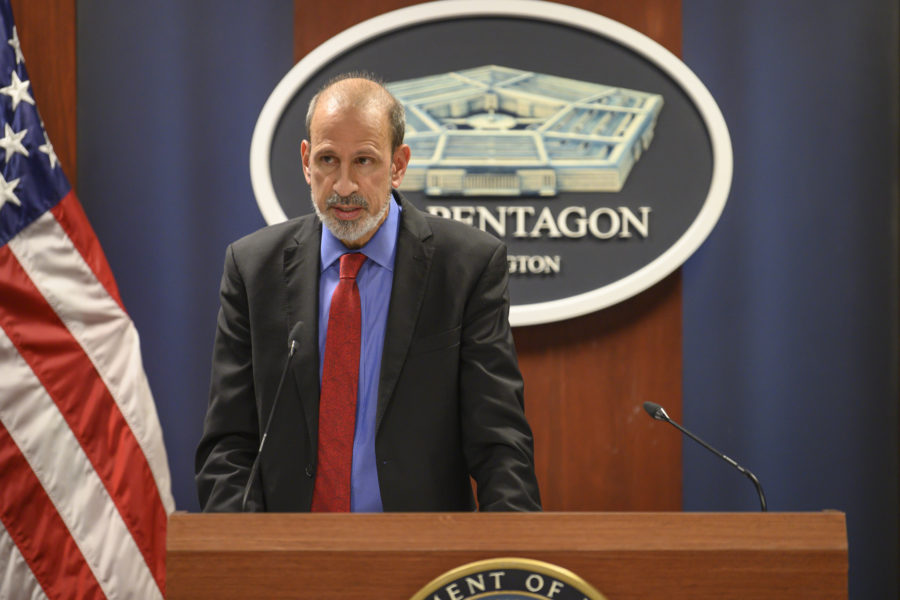At $886 billion, the Pentagon’s 2024 budget request is “first and foremost … a procurement budget,” declared Deputy Defense Secretary Kathleen H. Hicks March 13, as the budget was unveiled. The spending plan marks a shift from the Biden administration’s first two budget requests, which prioritized research and development over new weapons.
But investing in new weapons requires the cooperation of Congress, and administration officials argued strenuously for lawmakers to pass spending legislation before the next fiscal year starts Oct. 1. Extra money in the final spending plan is less valuable than on-time passage of the bill, they said.
The administration is seeking a record budget for procurement as well as research, development, testing, and evaluation, Defense Secretary Lloyd J. Austin III said in a statement.
All told, DOD is seeking $170 billion for weapons acquisition in fiscal 2024, up about $24 billion—or 16.4 percent from its request a year ago. The requested RDT&E budget is also up substantially at $145 billion, a $15 billion increase, or 11.5 percent, over the 2023 request.
One major driver: munitions. The administration wants to add predictability and price stability for munitions by buying more munitions in multiyear blocks. Some $30 billion of the budget is tabbed for munitions, most for acquisition.
“The thing that is newest and biggest is probably munitions,” noted Pentagon comptroller Michael J. McCord. “This is new in the sense of the emphasis of this budget …. Ukraine has really informed and highlighted the need to up our game here.”
Billions more will pay for new F-35, F-15EX, and KC-46 aircraft, as well as funds for Navy aircraft carriers and submarines, and new vehicles for the Army and Marine Corps.
Weapons purchases make up a little over 19 percent of DOD’s 2024 budget request, the highest share so far since President Biden was elected.
“[The budget] puts its thumb on the scale in favor of game-changing capabilities that will deliver not just in the out-years, but in the near-term, too,” Hicks said.
The budget request begins a months-long process, during which lawmakers are likely to add funds for additional purchases. In the last budget cycle, for fiscal 2023, legislators increased procurement funding by $17.7 billion, to $163.7 billion.
That action took a while. Congress didn’t pass the defense spending measures until Dec. 24, after multiple continuing resolutions were needed to keep the government funded after the fiscal year ended nearly three months earlier. CRs have become routine measures to keep the government from shutting down while political leaders negotiate spending agreements—only once in the past 14 fiscal years did Congress pass a spending measure on time.
‘If you add up the months DOD has been under a CR since 2011, it totals four years’ worth of
delays—delayed new program starts, delayed training, delayed permanent change of station
moves,” Hicks said. “That’s four years lost over the last decade-plus. To out-compete the [People’s Republic of China], we cannot have one hand tied behind our back for three, four, five, six months out of each year. And let me assure you: more money cannot buy back lost time.“
Asked if he would rather have more money delivered later in the year or a smaller budget on time, McCord echoed Hicks.
“The thing Congress can do for us and does do for us is provide resources,” McCord said. “But writing a check doesn’t solve every problem. And so the time that you lose, you cannot make up with more money. It’s just a fact. There are things that you can address with more money, but there are also things that you can’t.”
Republican leaders in Congress have already attacked the Pentagon budget request as “insufficient,” and even Democratic lawmakers have left open the possibility for change. An increase would likely put the overall topline past $900 billion—and set the stage for the first $1 trillion defense budget in the coming years.
“Do the math: the budget will hit a trillion dollars,” McCord said. “Even if it only grew three percent a year, when the numbers are what they are, it’s inevitable. And I think maybe that’s going to be a psychological, big watershed moment for most of us or some of us. But it is inevitable. And it just reflects the growth of the economy.”
Defense spending was once at 9 percent of Gross National Product; during the Reagan administration, at near the end of the Cold War, it was considered high at 6 percent. Today, defense spending is around 3 percent. So as much as is being spent, it’s a smaller portion of the overall economy.
“It’s a big number,” McCord said. “But in other contexts, you could look at it another way.”
